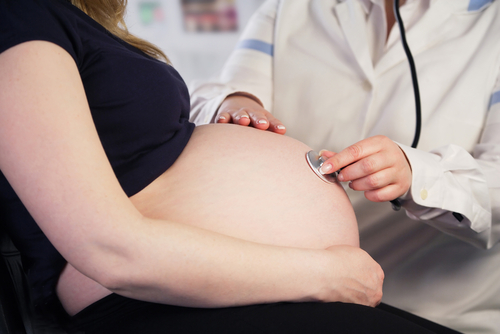A recent study showed that pregnant women who have persistent elevations in blood pressure may be at risk for developing metabolic syndrome after birth and cardiovascular disease later.
The study, “Prehypertension During Normotensive Pregnancy and Postpartum Clustering of Cardiometabolic Risk Factors – A Prospective Cohort Study,” was published in the journal Hypertension.
As a result of biphasic changes in peripheral arterial resistance (blood volume and cardiac output) during pregnancy, blood pressure decreases to low levels at mid-pregnancy and then returns to pre-pregnant level through term.
Consequently, the physiological alteration leads to the question of whether the criteria for the diagnosis of gestational hypertension makes sense because criteria for hypertension are based on non-pregnant people. The optimal blood pressure for pregnant women is unknown.
In the new study, a team of researchers led by Dr. Jian-Min Niu, of the Department of Obstetrics at Guangdong Women and Children Hospital in China, found that prehypertension could be risky for pregnant women and that pregnant women with blood pressure in the prehypertension range were 6.5 times at higher risk of developing metabolic syndrome after giving birth than women with lower normal blood pressure levels.
“Our findings underscore an important issue that has been long ignored in clinical practice — the fact that criteria for hypertension in pregnancy are derived from the general population,” said Niu in a news release. “We anticipate that if reaffirmed in further research, our study could spark a change in what we currently deem healthy blood pressure in pregnant women.”
The research team prospectively evaluated the relationship between multiple antepartum blood pressure measurements and the occurrence of postpartum metabolic syndrome in 507 women after a live birth, who had normal blood pressure while pregnant.
All study subjects had seven or more measurements of their blood pressure and other standard pregnancy monitoring tests, such as fetal ultrasounds and weight measurements. In addition, the researchers measured blood sugar and cholesterol levels during the entire study, before and after giving birth, and for up to 1.6 years after giving birth.
Researchers identified the following three distinctive diastolic blood pressure (DBP) trajectory groups: women whose blood pressure stayed on the lower end of normal during pregnancy, those whose pressure drifted around mid-point normal, and those whose pressure stayed in the higher end of normal or prehypertension.
The study noted that measurements did not predict future risk, but that patterns of repetitive rises during pregnancy did, emphasizing the dynamic nature of blood pressure throughout pregnancy.
The team further suggested that pregnancy could be a sort of cardiovascular stress test that could also hint at issues with glucose levels, blood pressure regulation, and cholesterol metabolism.
“Blood pressure measurements are already done as matter of routine and cost-effective checkups during pregnancy, so our findings underscore this tool’s potential to gauge a woman’s post-partum cardiovascular risk,” Niu said. “Early identification of metabolic risk factors and implementation of lifestyle modifications may help delay the onset of cardiovascular disease that would present itself 20 to 30 years after delivery.”


